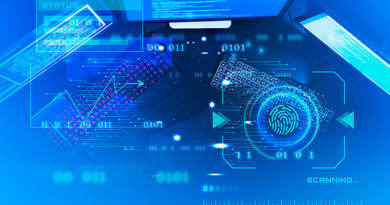How Biometric Authentication Is Transforming the Security of Cloud Computing
The following guest post on the rise of cloud biometrics was sumitted by Jackie Edwards.
When you’re in charge of information security for your organization, the idea that employees can access information anywhere might make you squeamish. Yet, cloud computing continues to grow and is now an indispensable part of any business that wants to stay mobile. So, what can you do as a CIO to keep your data protected? Biometric authentication is here to add extra security to cloud computing.
Biometrics Are More Secure than Traditional Authentication Methods
Thanks to the many advantages biometric security systems in cloud computing hold over IDs, passwords, and other traditional authentication methods, more organizations are turning to biometrics. It has the ability to ensure that rendered services are only accessible to authorized or legal users while lending a high level of security. The behavioral or physiological characteristics of individuals cannot be duplicated, therefore the biometric systems can offer better accuracy and reliability.
How Do Biometric Security Systems Work in Cloud Computing?
Traits that are unique to each individual, including irises, faces, or fingerprints, are utilized to authenticate the identity of a person through biometric security systems. These days, one of the most widely used and well-known biometric modalities is fingerprint technology. Fingerprints are actually where biometrics got their start. Your fingerprints have one of a kind valleys, ridges, and other patterns that help distinguish you. Even twins have unique fingerprints.
In cloud computing, the users are first enrolled in the biometric system supplied by a service provider or the cloud platform. During the enrollment process, individuals must submit multiple biometric fingerprints. These are then stored on the cloud provider’s side as templates. The user is prompted to provide a scan of his fingerprint whenever they want to access a cloud service. The fingerprint is compared to the stored template.
Users are authenticated and gain access once there is a positive match between the fingerprint scan and the stored template. The images from the user and the fingerprint templates are both encrypted for additional security. The biometric system is put into action every time a user wants to access a cloud service. The user will be directed to the cloud service platform that they have clearance to access once they complete successful authentication.|
How Can Your Organization Benefit from Biometric Authentication for Cloud-Based Applications?
Web-based UIs accessed through a mobile app or web browsers are the main ways that cloud-based services are used. Cloud biometrics are also available on demand and managed by a cloud service provider. The server for the biometric security system contains the processing data generated during the verification and identification process along with the biometrics templates database.
Issues can arise if hackers get access to the stored templates, even though no two biometric traits are the same. The encryption technology used in biometric authentication takes care of this security threat. Encryption is the process of converting data into a code that unauthorized individuals cannot understand. And, decryption is converting the data back to a usable form.
For a boost in security, you might consider a multi-finger security model, popularized by smartphone manufacturers. With this model, the user registers with three fingerprints of their choice and assigns a digit for each finger. Both the mapping of the fingers and the single digit assigned are encrypted and stored at the end of the service provider. Since there are three levels of input, this scheme supplies the highest level of security. And, the added encryption makes it virtually hacker-proof.
Security is fundamental to the success of using cloud-based applications for your business. When you adopt biometrics for your cloud computing you will experience reliability, scalability, cost savings, and several other benefits. This is why biometrics are the wave of the future for cloud computing.
Author Bio: Now working as a writer, Jackie started her career in IT and software development, but after becoming a mom refocused and decided to spend more time with her family. When she’s not writing, she volunteers for a number of local mental health charities and also has a menagerie of pets to look after.











